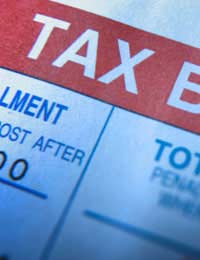How are Employee Benefits Taxed?

Employee benefits are a potentially attractive method by which businesses can remunerate their staff. There are numerous advantages for both employer and employee; it is possible for both to make a cash saving through the efficient use of benefits, while benefits received by the employee can frequently be of more use than the portion of their salary that they may be sacrificing. However, the tax treatment of benefits means that there may be little or no tax advantage to sacrificing salary in favour of these so-called ‘perks’.
Inland Revenue Guidance
The Inland Revenue is verbose in its guidance on benefits; however, the tax treatment of these items hinges on one basic principle: employee benefits are considered as part of the overall financial remuneration of the employee for tax purposes. The methods by which the respective tax liabilities are calculated can be complex, and vary depending on the nature of the benefits in question.In the first instance, it should be noted that not all benefits are taxable. In fact, the Inland Revenue lists eight groups of benefits that are taxable, and later lists specific exemptions. Broadly speaking, taxable benefits include: employee accommodation and all associated rates and utility bills; the provision of a vehicle to an employee, subject to some clarification depending on the nature of the use; petrol or other fuel for such a vehicle; gifts or below market price sale of business assets to an employee; the direct payment by a business of expenses incurred by an employee; the settlement of a company director’s income tax bill by the employer; scholarships given to the children of an employee; and “any other benefits or facilities of any kind”, with the exception of specifically exempt items.
An Example – Company Cars
On a very basic level, employers are obliged to pay Class 1A NICs in relation to benefits provided. The sum paid will depend on the valuation of the benefits in question. Similarly, the employee will be required to pay income tax on taxable benefits. As has been mentioned, the way in which the value is calculated differs from benefit to benefit. For example, if you have a company car, you would calculate the value of the benefit in the following way:- Calculate the value of the car itself, and any “accessories”
- Deduct the value of any capital contribution you have made
- Multiply the remainder by the percentage stipulated by the DVLA for the car’s CO2 emissions. You should note at this point that the maximum value of a car for benefits tax purposes is £80,000
- Calculate the amount of time during which the car was not available for your use, and make the relevant percentage deduction.
As can be seen, these are relatively complex procedures, and vary depending on the nature of the benefit. As such, you should seek guidance from HMRC or your local tax office on the tax liabilities of the employee benefits that you receive.
It should be remembered that, while there are very few employee benefits that are tax exempt, there are ways in which the tax liabilities of benefits can be mitigated. Further information on this is available in other articles in this section.
- A Career Break As An Employee Benefit
- FAQ: Employees And Special Leave Requests
- Negotiating Employee Benefits at Job Interviews
- Does Your Business Need an Employee Benefits Consultant?
- The Disappearing Benefits in the UK Workplace
- Temporary Workers and Equal Employee Benefits
- Essential Employee Benefits for Working Parents
- Global Employee Benefits
- Creating an Employee Benefits Publication
- An Employee Benefits FAQ
- Questionnaire: Do you Get the Benefits You're Entitled To?
- What are Voluntary Benefits?
- Advantages of Benefits for Employer and Employee
- The 'Salary Sacrifice' Concept
- What are the Most Tax Efficient Employee Benefits?
- Monitoring the Success of an Employee Benefits Scheme
- What is a Flex Scheme?
- The Distinction Between Benefits and Incentives
- What are Employee Benefits?
- First Steps for Establishing Employee Benefits


Re: Reclaiming Holidays During Sick Leave
I was off sick with stress and depression caused by work earlier this year and have been told that I am not entitled…
Re: Reclaiming Holidays During Sick Leave
Hi I was involved in a car accident in May 2020 during working from home. In July 2020 I had to go off sick and still…
Re: Reclaiming Holidays During Sick Leave
I went off sick on the 5 dec , was due to go on holiday 3 days the following week but was off with Covid , should I…
Re: Reclaiming Holidays During Sick Leave
Hi there, my employer has asked us to all take some paid holiday during the 1st Coronavirus lockdown but i had to…
Re: Reclaiming Holidays During Sick Leave
I previously booked 8 days holiday for Easter this year unfortunately I became sick about a month before and was still…
Re: Reclaiming Holidays During Sick Leave
Hi, I have been granted 2 weeks annual leave starting from !st May 2020.However, I got sick right at the beginning…
Re: Opted Out of SERPS: What Are Pension Options?
in the 80s i came out off seps went into my own pension best think i done paid at the age off 50 lm now 63…
Re: Reclaiming Holidays During Sick Leave
I have recently returned to work after 6 weeks off due to stress and bullying which caused me to have a breakdown, in…
Re: Reclaiming Holidays During Sick Leave
Hi I work at a College which is shut for 2 weeks for Christmas and New Year - bank holidays and the rest of the…
Re: Reclaiming Holidays During Sick Leave
I booked some annual leave off of work over christmas months ago im not going on holiday just wantes the time to visit…